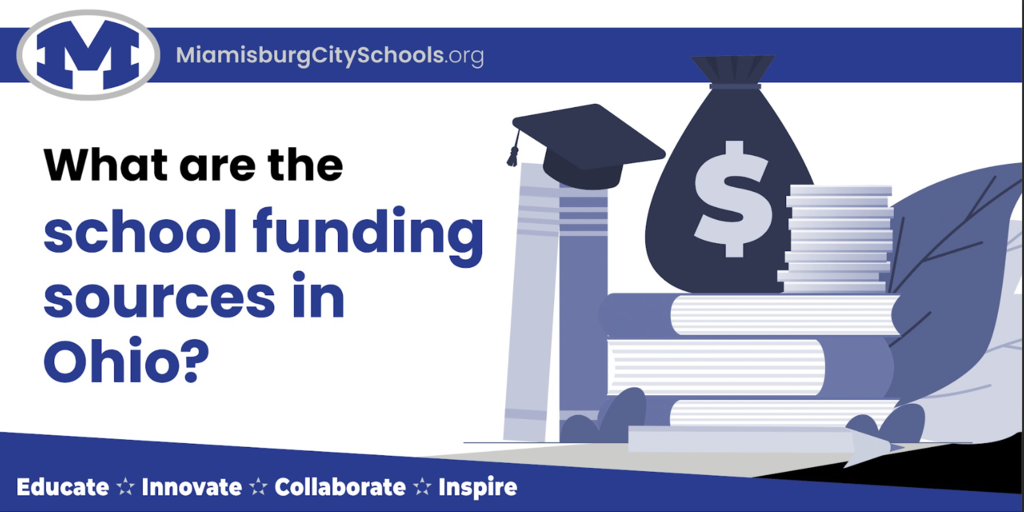Proposed Plan: The Ohio Senate aims to aid seniors in the face of rising property values. State Sen. Blessing highlights concern for fixed-income seniors, suggesting an expanded Homestead exemption, which would provide a reduction in their property taxes.
Discover the three main funds used in schools with MCS Treasurer Justin Blevins. The Operations Fund (General Fund) is vital for daily operations and is fueled by local property taxes. This fund sustains teaching, utilities, materials, supplies and facility maintenance.

Bond Funds from property tax contributions after a Bond Issue success are legally bound to specific capital projects. Dedicated to building, renovations, and land acquisition—meeting enrollment expansion needs.
Permanent Improvement funds, fueled by property tax revenues from a passed levy, fund lasting projects—enhancements, fixes, and acquisitions. Prioritizing safety and enriching the learning environment.
The Operations Fund (General Fund) is vital for daily operations and is fueled by local property taxes. This fund sustains teaching, utilities, materials, supplies and facility maintenance.
News regarding property tax relief: The Ohio Senate is reviewing a revised plan (HB 187 & SB 153). This potential shift centers on a Homestead exemption that will particularly benefit seniors. Stay tuned for updates that may impact our community homeowners.
Did you know? Over half of the state's funding, excluding federal dollars, comes from local sources—primarily property taxes. Since the 1800s, property tax has been the primary support for Ohio's schools, with about two-thirds allocated to education.
State Sen. Bill Blessing has recently revealed a potential change in property tax, favoring an expanded Homestead exemption for seniors. The proposed change looks at income levels to customize the benefits, hoping to lessen the impact of increasing property values.
An Emergency Levy is a limited-time property tax increase proposed for up to five years for a specific dollar amount. Why is it called "emergency"? Well, it's not necessarily an emergency, but it's called so because it's typically proposed for a specific, legally defined reason.

Bond funds are used for financing projects like new building construction, significant renovations & when needed land acquisition. The levy is for a specified amount over a period of time to pay for construction bonds from property taxes subsequent to the passage of a Bond Issue.

A general levy is a versatile funding mechanism used for various school district purposes, primarily for two key areas: operating funds & permanent improvements. These levies are pivotal to day-to-day operations & maintenance of school district infrastructure. #MCSFinanceFridays

HB 920’s reduction factors exist so that a school district's effective millage rate stays above 20 mills, colloquially called the "floor." If the preliminary calculation pushes the effective millage rate below 20 mills, a recalculation is required to establish a rate of 20 mills.

House Bill 920 is an Ohio law that was passed in 1976. It is designed to prevent revenue fluctuations resulting from property reappraisals. The law works by calculating a set of reduction principles that are applied to a school district's millage rate.

Rising property values don't automatically mean more funding for our schools. Voted levies are a separate mechanism used to generate. However, the most common, general levy, is set for a certain amount regardless of property value fluctuations. #MCSFinanceFridays

Ever wondered precisely how your property taxes are calculated? The assessed value, or taxable value, is a percentage of your home's market value. Specifically, it's calculated as 35 percent of the appraised value. #MCSFinanceFridays

The appraised value of your home is the estimated amount it could sell for in today's real estate landscape. Factors include the property's location, size, condition & current state of the market. Appraised or market value is crucial in determining your property taxes.

School funding is a team effort between the state & our local school systems. More than HALF of the money that funds them is from local sources (property taxes). Around 2/3 of all property taxes support our schools while the remaining goes toward other local government needs.

The State requires the County Auditor to complete an evaluation of property every six years and an update every three. Montgomery County completed a full reappraisal in 2020 and conducts an update of the appraisal this year. New values impact the property taxes you pay in 2024.

Do you know what millage means? It’s the percentage used to determine the tax revenue based on the assessed value of your property. Simply put 1 mill = 1 dollar for every 1,000 dollars in assessed value.

What is outside millage? Voted on mills or outside millage are approved by voters through ballot measures and are subject to the property tax reduction factor, meaning that the levied amount is what is collected regardless of property tax increases or changes.

